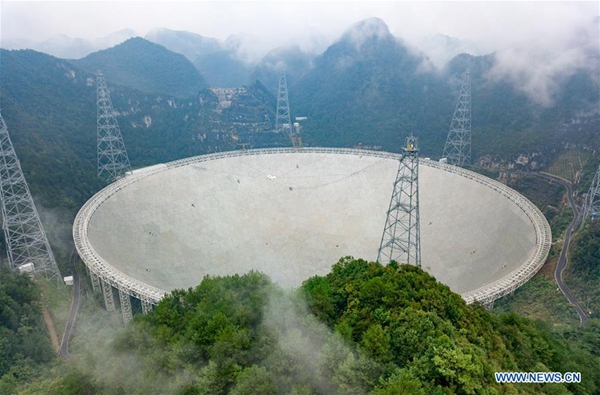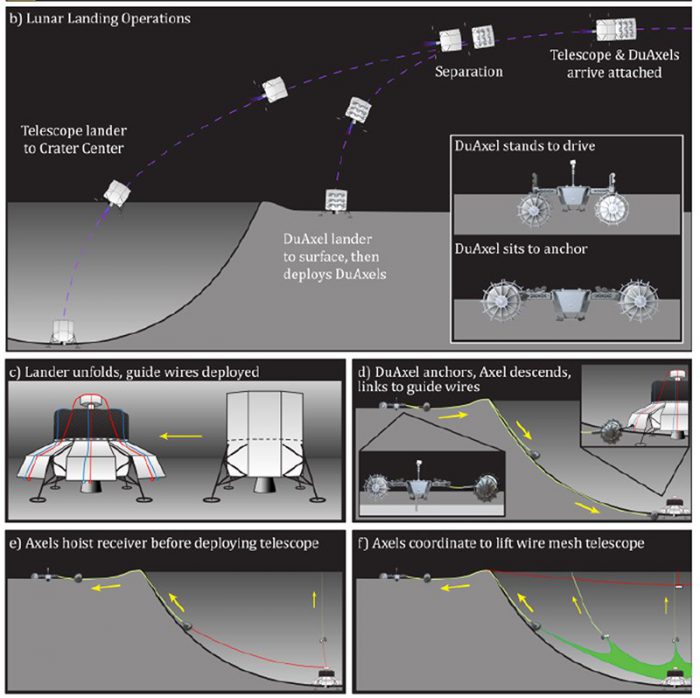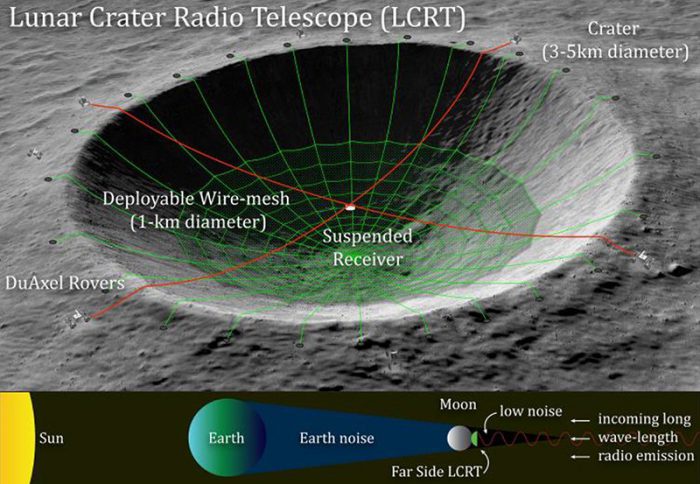A new NASA project highlights everything that we love about the organization, space exploration, and, well, just science in general!
It mixes cutting edge technology with hey!-use-what-you-got resourcefulness to create the kind of device that makes you go WOW. In this case?
A radio telescope that is made out of a crater on the far side of the Moon!
Plan receives funding
To be clear this huge gadget — called the Lunar Crater Radio Telescope (LCRT) — is still only a proposed project. But earlier this month NASA gave this idea funding, or money, to be more fully developed. That means that there is a good chance that we'll see it in the future as a part of NASA's Artemis missions to the Moon.
The dish is planned to be about one kilometre (.6 miles) wide, which is twice the size of the largest radio telescope on Earth. Though we may think of radio in terms of things that we hear, radio waves can be used to make 'images' of all kinds of deep space phenomena, including quasars, galaxies, and nebulae.
But why build a crater radio telescope? And why on the Moon?
Super quiet station

The world's largest radio telescope is the Five-hundred-metre Aperture Spherical Telescope (FAST) in China. (Xinhua Press/Wikimedia Commons)
Radio telescopes are different to most other deep space telescopes in that they can work day or night — sunlight doesn't interefere with them. But they do share the other enemy of all telescopes on Earth. The atmosphere.
There is a lot of radio wave noise surrounding Earth — some of it natural, some of it artificial. These things get in the way of signals coming from space.
However, the Moon has no atmosphere. And because it is tidally locked — meaning it doesn't rotate — one side of the Moon is always facing away from us. In other words, it is always sheltered from the noise that Earth creates. This super quiet, low-noise zone is the ideal place for a radio telescope!
Made by drones

This image shows how drones could build the telescope. (Saptarshi Bandyopadhyay/NASA/JPL)
How would it be built? The plan would be for drones to do all the work. According to NASA robotics technologist Saptarshi Bandyopadhyay, drones would lay out a kilometre-wide mesh inside a crater that is between 3 to 5 km (1.8 to 3.1 miles) across. A receiver would then be suspended over the centre of the crater.
And presto! A Lunar Crater Radio Telescope.
The crater's natural ability to collect and focus radio waves should be sensitive enough to observe wavelengths that humans have never heard before. And when it comes to observing deep space, the more sensitive the device, the better it is!
What secrets can astronomers learn with a telescope like this? That's anyone's guess right now. And they have to build it first. But suffice it to say, the projects around Artemis should make the next decade a very exciting one!
 This brilliant plan would use the Moon's natural features to explore deep space. (Saptarshi Bandyopadhyay/NASA/JPL)
This brilliant plan would use the Moon's natural features to explore deep space. (Saptarshi Bandyopadhyay/NASA/JPL)










Pretty smart.